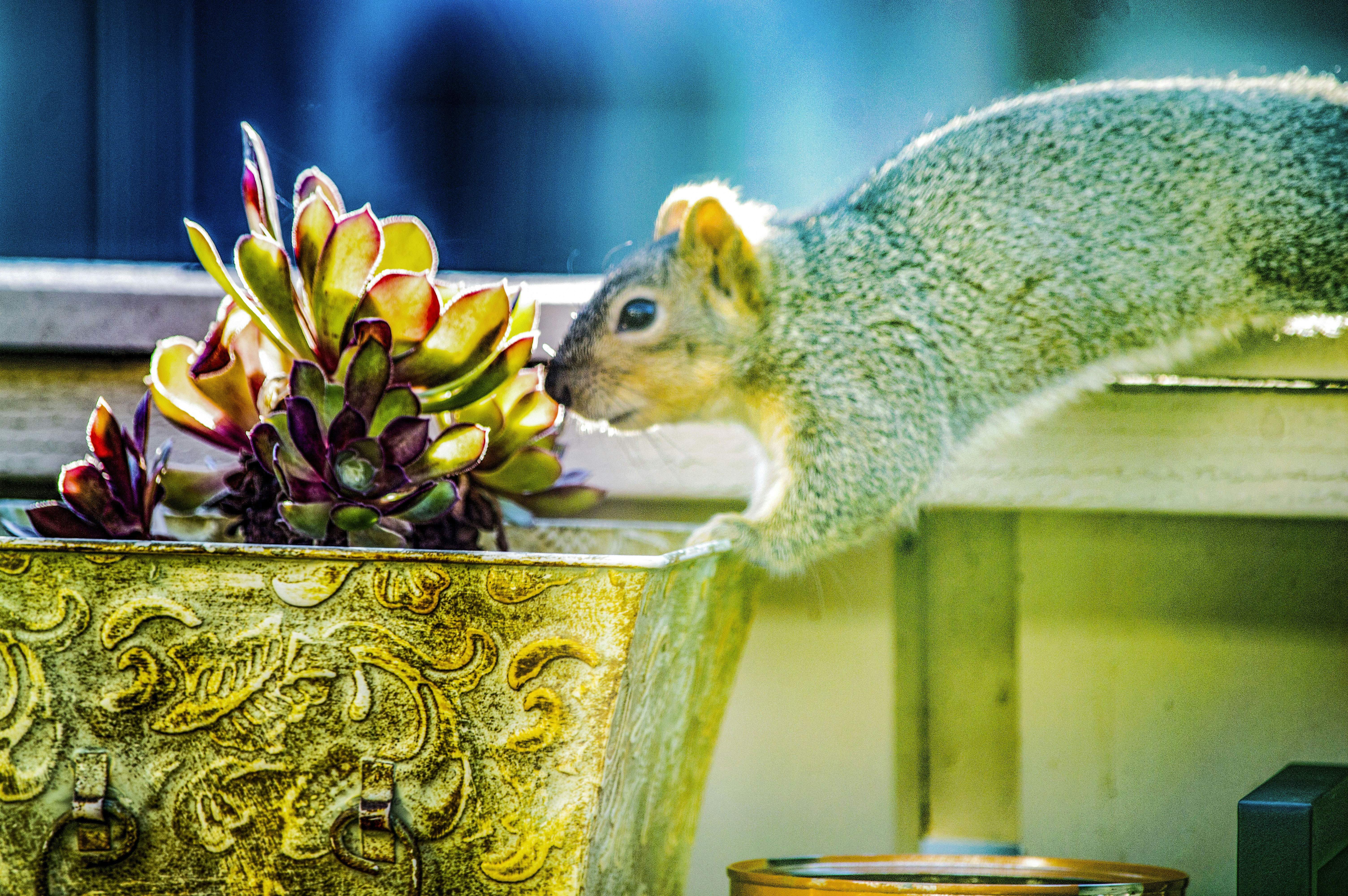Introduction to the Great Squirrel Wars
The phenomenon often referred to as the Great Squirrel Wars encapsulates the longstanding conflict between dedicated gardeners and the ever-curious squirrels that inhabit their spaces. Each fall, as planting season approaches, gardeners prepare to enrich their gardens with a variety of bulbs that promise beautiful blooms in the spring. Popular choices include tulips, daffodils, and hyacinths, each bringing a splash of color and vibrancy to outdoor spaces. However, this annual ritual is marred by the challenge posed by squirrel populations, which are known for their insatiable appetite for these nascent bulbs.
Squirrels, driven by their natural instincts, are attracted to the soft earth turned by gardeners, where the scent of freshly planted bulbs invites their exploration. These small mammals possess an extraordinary sense of smell, allowing them to detect the hidden treasures beneath the soil. Consequently, the fall planting season often turns into a battleground, as gardeners devise various methods to safeguard their valuable investments from the relentless foraging behavior of squirrels.
Understanding the dynamics at play in this wild confrontation is crucial for gardeners. The presence of squirrels can significantly impact the success of bulb planting, as their predation can result in diminished blooms come springtime. Gardeners must recognize that while squirrels contribute to the local ecosystem, their propensity to dig up and consume bulbs poses a direct threat to planned flower displays. This section sets the foundation for exploring the various strategies and techniques that can be employed to protect bulb plantings, ensuring that gardens flourish despite the challenges posed by these persistent pests.
Understanding Squirrel Behavior
Squirrels are known for their adaptive nature and resourcefulness, traits that often make them a nuisance for gardeners, particularly during the fall planting season. Their behaviors stem from both instinctual drives and environmental factors. One of the primary activities that define a squirrel’s behavior is foraging. Squirrels are acutely aware of their surroundings and utilize their keen sense of smell to locate food sources. During the autumn months, they exhibit heightened foraging activity as they search for acorns, nuts, and other food items to sustain them through winter.
Moreover, squirrels have a strong instinct to hoard food, which is an evolutionary adaptation for survival. This instinct entails gathering and storing food in various locations—a behavior known as ‘caching.’ While this is a natural survival tactic, it can inadvertently lead to conflicts with gardeners who have recently planted fall bulbs. Squirrels may dig up freshly planted bulbs, mistaking them for food, or they may cache similar items nearby, resulting in potential damage to garden layouts.
Environmental factors also play a crucial role in squirrel behavior. In seasons of food scarcity, which can occur due to climatic conditions or shifts in local ecosystems, squirrel activity typically increases. When natural food sources are limited, squirrels are more likely to venture into gardens and landscapes in search of sustenance. This situation presents challenges for gardeners aiming to protect their bulb plantings, as heightened squirrel activity can lead to significant disturbances in the garden environment.
In summary, understanding the foraging patterns, dietary preferences, and instinctual drives of squirrels provides valuable insights into how they interact with garden spaces, reinforcing the need for proactive measures to safeguard gardening efforts during the fall season.
Effective Strategies for Protection
Protecting fall bulb plantings from squirrels can be a challenging task for gardeners, but various effective strategies can be employed to mitigate their impact. One of the most common methods is the use of physical barriers. Gardeners can install wire mesh fencing or netting around their planting areas to prevent squirrels from accessing the bulbs. It is advisable to ensure that the barrier extends several inches underground, as squirrels are known to dig. This method is particularly effective for larger garden plots.
In addition to physical barriers, employing deterrents can also prove fruitful. There are a variety of deterrents available on the market that incorporate scents that squirrels find unpleasant. For example, products containing ingredients such as cayenne pepper or garlic can be sprayed around the planting area to discourage these animals. Furthermore, commercial repellents that utilize predator scents may also be beneficial, creating a psychological barrier that keeps squirrels at bay.
Companion planting techniques represent another innovative method to protect bulb plantings. By integrating plants that have strong scents or certain natural properties with bulb flowers, gardeners can mask the scent of the bulbs and make it more difficult for squirrels to locate them. For instance, planting herbs like mint or rosemary can deter squirrels while enhancing the garden’s fragrance.
Gardeners may also explore natural repellents readily available at home. Castor oil, for instance, can be mixed with water and a few drops of dish soap before being sprayed onto the planting area. This simple solution can effectively repel squirrels without harming them or the surrounding environment. Ultimately, the choice of these strategies will depend on individual gardening styles and preferences, allowing for tailored approaches to safeguarding valuable fall bulb plantings against squirrel invasions.
Preventive Measures and Long-Term Solutions
To effectively safeguard fall bulb plantings from squirrel interference, the implementation of preventive measures before the planting season is essential. One of the first steps is creating a squirrel-resistant garden layout. This can be achieved by strategically placing bulbs in areas less accessible to squirrels, such as raised beds or enclosed gardens. Utilizing physical barriers, like wire mesh or garden netting, can deter these creatures from digging up the bulbs, thus protecting the investment of time and resources.
In addition to physical barriers, selecting strains of bulbs that are less appealing to squirrels can also be beneficial. Certain varieties, such as daffodils, contain toxic compounds that deter squirrels and other pests. By incorporating these bulbs into garden designs, gardeners can create a less enticing environment for squirrels. Knowledge of local wildlife can aid in selecting additional plants that are less attractive to them, thereby enhancing the overall ecosystem.
Fostering an ecosystem that attracts natural predators is another strategic long-term solution. Birds of prey, such as hawks and owls, can help control squirrel populations. Implementing birdhouses or perches can entice these predators into the area, providing a natural check against the squirrel threat. Moreover, maintaining a balanced ecosystem with proper plant diversity can also bolster the presence of other natural controls.
Lastly, community gardening efforts can serve as collaborative approaches among gardeners to tackle the challenges posed by squirrels. By sharing experiences, strategies, and resources, communities can create squirrel-resistant environments across larger areas, ultimately reducing the problem. The Great Squirrel Wars require creativity and resilience, and through collective action and proactive measures, gardeners can better protect their beloved bulb plantings.
If you’re interested in purchasing the item you seek, please click the link for additional details: #americanachoice.
https://amzn.to/3SBN3Oy
AFFILIATE DISCLOSURE: I am an affiliate for this company, I am not a paid employee.
I may receive a commission if you click a link on this page and choose to purchase something.
You can rest assured I will only share things I believe in and will be valuable to you.



